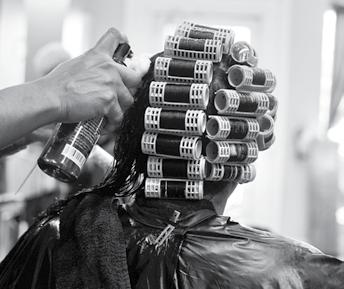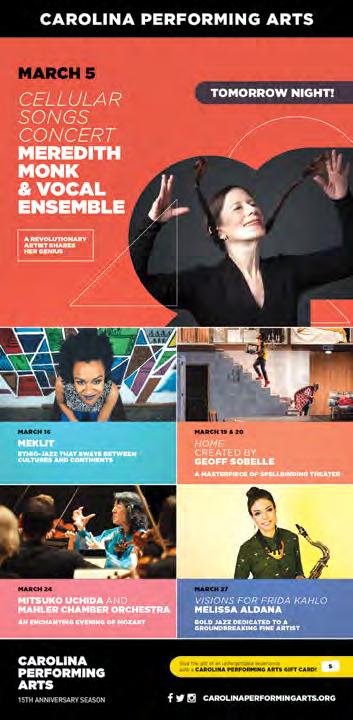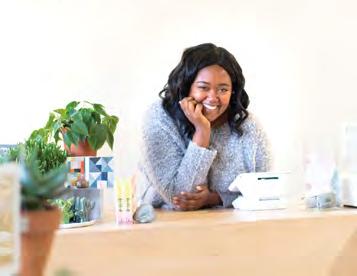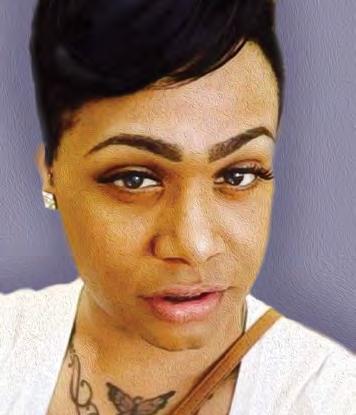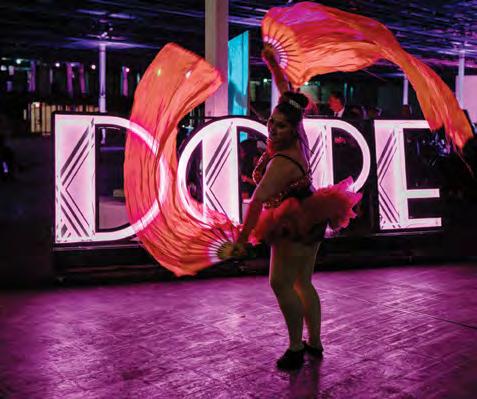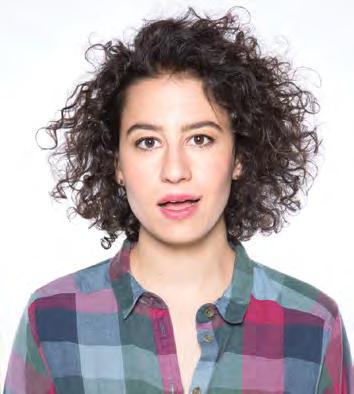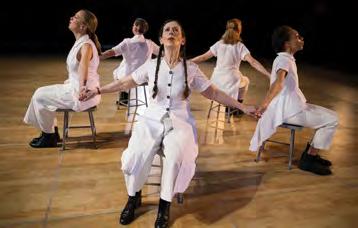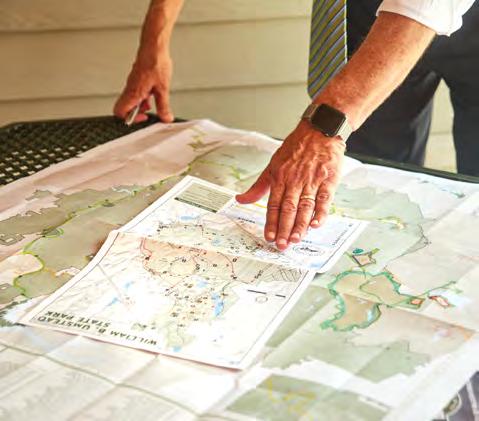
6 minute read
What, pray tell, is the point of a “straight-friendly” gay bar? BY LEIGH TAUSS
from INDY Week 3.4.20
by Indy Week
Queerish
What’s the point of a “straight-friendly” gay bar?
BY LEIGH TAUSS ltauss@indyweek.com
Here is how to make a gay bar, according to work.—lowercase, with a period, why not—Raleigh’s new Fayetteville Street nightclub:
Step 1: Take a straight bar. Step 2: Add neon lights and generic dance music. Step 3: Leather couches. Everywhere. Step 4: Profit.
In an interview with WRAL, manager Joey Eshleman—he couldn’t be reached for comment—said he likes to think of work. as a “straight-friendly” gay bar, a concept that seems to presume that other gay bars are turning away breeders at the door. (Proof this is wrong: Flex on karaoke nights. Also, The Bar, anytime.) In reality, work. is more like a facelift for the former Capital City Tavern—it’s owned by the same people—with black leather chaise lounges replacing the tables and gender-neutral signs on the bathrooms.
Across the country, gay (and lesbian) bars have become something of an endangered species over the last decade. As society became more accepting of LGBTQ people, the need for discreet spaces of their own diminished. Hookup apps like Grindr made it easy for LGBTQ people to meet people for sex outside of a gay bar. And since gay bars were historically located in marginalized neighborhoods, rising rents due to gentrification have sometimes made business unsustainable.
And there’s also the fact that gay bars have become less gay, while queer and drag events have moved to nontraditional venues. The lines have blurred. Gay bars have become havens for straight people, particularly straight women seeking a good time without the hassle of straight men. But where straight women go, straight men inevitably follow. Eventually, a gay bar is just a bar.
So what, then, is the point of the straight-friendly work.? Perhaps Eshleman’s comment was just a throwaway line, but on Saturday night, I set out to explore the question anyway.
Other than the furniture and a new logo, not much has actually changed at work. since the Capital City Tavern days. The patrons I ran into didn’t seem to mind. Some of them didn’t seem to know the difference—or if they did, they didn’t care.
I rolled in just before 11:30 p.m., the dawn of club o’clock, and work. was packed with a diverse crowd almost impossible to define: 21 to 80, frat boys to elder gays, nonbinary folks to middle-age lesbians to a woman in a rhinestone tiara wearing a sash that proclaimed her the “bride.” No one was particularly cool or uncool. It was like if everyone you never wondered about from middle school washed up on a dance floor.
I approached the bar, discovered a surprisingly decent beer selection, and ordered a Crush Cucumber Sour. I asked the bartender if it was always this crowded.
“More,” he said, smiling. “This is a light night.” Of course it is. There was nothing risque or challenging here, no discernable sense of culture, nothing to identify it or make it stand out. work. is the Applebee’s of gay bars, a corporate entity that could be picked up and dropped off in any city in America and no one would know the difference. It manages to be neither pretty nor gritty; it simply exists and makes money. It is a shell of brick walls to house sweaty bodies and serve pricey drinks to people trying to have a good time and/or get laid. It is not fighting the system. It is the system. There was a goddamn Fast & Furious movie playing on the television.
“It’s upscale,” said another John, whose last name I didn’t catch. He had a gray mustache and a black leather trenchcoat. “It’s the martinis bar for the in-crowd, and everyone I saw walk in here has a big penis.” Um, OK. I curled up on a barstool and nursed my beer as couples gyrated under a disco ball. The bass was too loud (or maybe I’m too old?). The beat seemed to be continuously ascending like I was trapped in the climax of a retro video game. An employee in a black “work.” shirt nearly grabbed the stool out from under me, mumbling an apology. A remix of “The Macarena” started playing, drawing the Boomers in the crowd to the dance floor.
In the bathroom, I overheard a drunk girl rambling about “heteronormative spaces” and declaring herself an “ally.” I practically ran to the bar and ordered a tequila soda with lime. A Lizzo remix thumped so loudly I couldn’t hear myself think.
When I got home, with my ears still ringing, I reconsidered my initial reaction. Not that I’m wrong to think of work. as corporate and generic. But maybe Raleigh’s LGBTQ community should have something as soulless as Glenwood South’s Cornerstone.
Why do all gay establishments have to be interesting? If people were having fun—and they were—who I am to judge? W
EVENTS
FRI., MARCH 6, 7 P.M., $30 Arts & Drafts Craftboro is partnering with the Ackland Museum of Art on an “art and draft” event that marries your crafting impulses with your, well, craft beer impulses. Munch on Coronato pizza while chatting with local art Stacy Lynn Waddell.
Ackland Museum of Art 101 S. Columbia St., Chapel Hill 919-966-5736 | ackland.org
FRI., MARCH 6–SUN., MARCH 8, VARIOUS TIMES, $6–$10 34th International Festival of Raleigh This massive annual event isn’t technically a food festival—alongside sidewalk cafes (where you can sample food from around the globe), you’ll encounter dances, games, demonstration booths, and even naturalization ceremonies. But it is an incredible opportunity to celebrate and honor the 60 different Triangle ethnic communities that are participating this year, and to try some new things along the way. Jim Graham Building at the State Fairgrounds 4000 Blue Ridge Road, #140, Raleigh
BEGINNING SUN., MARCH 8 Drink Café Femenino Coffee at Triangle-wide Cafes In honor of International Women’s Day, Triangle-area restaurants are partnering to serve and spotlight Café Femenino Coffee, the organic coffee program based in Hillsborough that sources exclusively from farms owned and operated by women across the world. Beginning March 8, drop by Guglhupf, Lantern Restaurant, Garland, and The Root Cellar Cafe (among others) to grab a cup of coffee or bag of beans. Details and a full list of participating restaurants can be found online.
Various locations cafefemeninocoffee.com
1 , 0 0 0 W o r d s

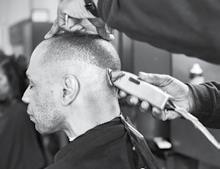
Still Thriving
WORDS + PHOTOGRAPHY BY JADE WILSON
In 2001, when downtown Durham was a ghost town after 5:00 p.m. and on weekends, Tianitia Davis and Sherry Kollick decided to move their hair salon, The Hair Estate, from University Drive to Parrish Street. With support from Self-Help Credit Union, they became—and still are—the only black-owned salon downtown. They’re also the second-oldest black-owned business on Parrish Street today. With all the revitalization taking place around them, they’re proud to still be going strong. W
